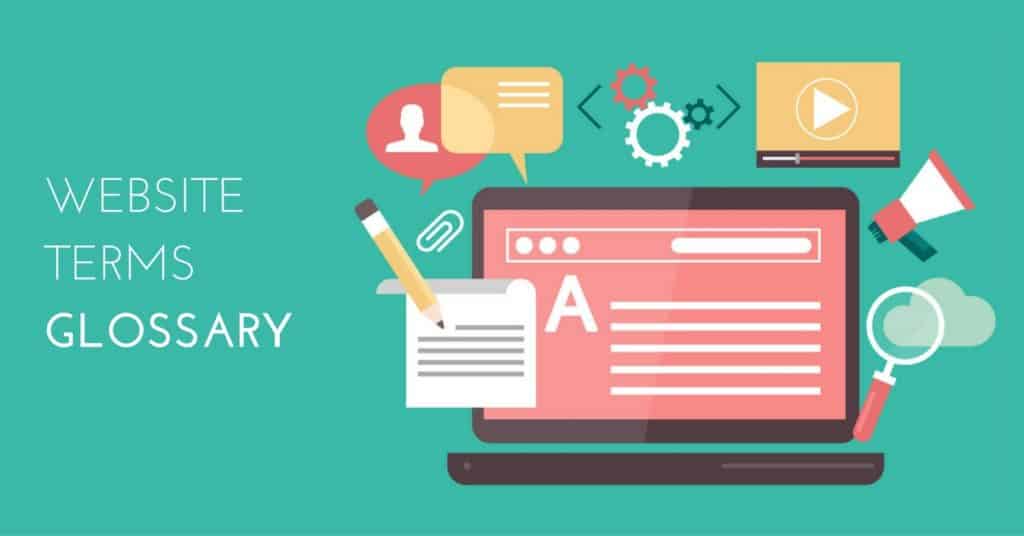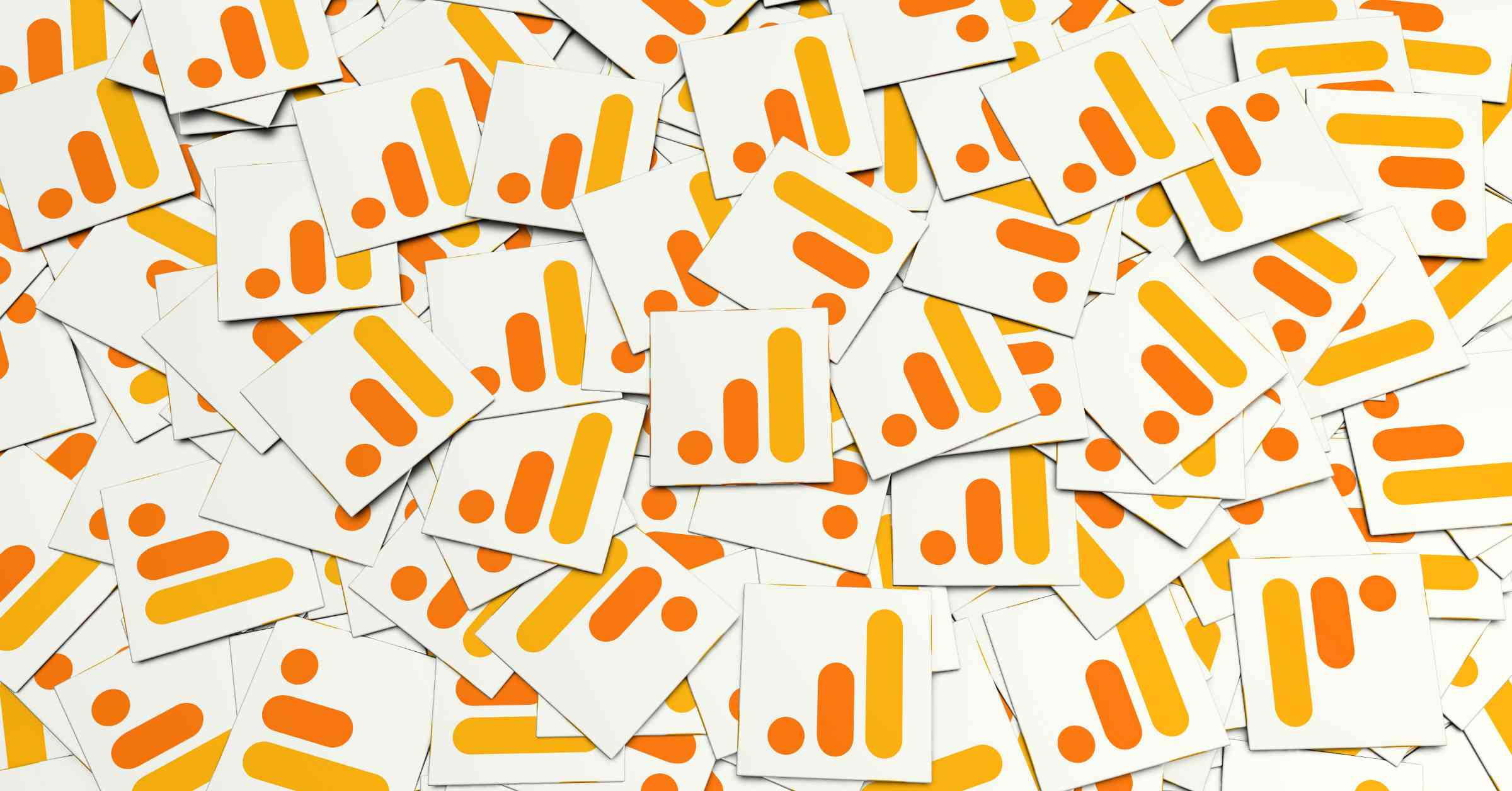There’s a lot of vocabulary to push through when you’re talking about websites. Even though there is a huge visual component to web design, it’s still pretty technical. That’s why it helps to do your homework and learn the lingo!
Here are some of the terms you might hear us throwing around during your website project:
Basics
Browser
Starting with the basics, the browser is the application the visitor uses to navigate through the internet and view your website. Internet Explorer, Mozilla Firefox, and Google Chrome are the most prevalent browsers on desktops. Browsers vary depending on device and operating system, so there are quite a few of them out there. Good web design should be tested to see how it works on all common browsers.
Cache/Caching
Cached files are saved to a visitor’s computer by their browser, so the next time they visit your site the pages using those files load quicker.
Cookie
The crumbs that follow you along on the internet. Cookies refer to the bits of data that your browser remembers, such as your autopopulating your usernames.
Domain
The name of the website, such as c-leveled.com. It’s important for branding, search engine optimization, and simple memorability.
Doman Name Service (DNS)
Translates your IP address into your domain name.
E-commerce
The buying and selling of physical and digital products through a website. Short for electronic commerce.
Favicon
The icon that is displayed in the address bar of a browser when your website is being viewed.
Landing page
The page where a guest first arrives when entering your site. Landing pages are used in web design to elicit particular responses from guests. Optimizing landing pages to better convert visitors into customers is a crucial aspect of web design and digital marketing.
Resolution
Display resolution refers to the pixels that are displayed on your device’s screen.
Uniform Resource Locator (URL)
This is essentially your site’s address on the internet.
Design
Fold
The portion of your website that lives at the bottom of the browser when a user is visiting. The information you have above and below the fold are important web design considerations.
Navigation
Navigation refers to how visitors move around your website. Menus, links, on-site search tools, and anything else which guides guests from one page to another. Good navigation is crucial to good web design and largely determines the user experience.
Template
Used to make the design consistent across the entire website.
Site Map
A map of your website that tells search engines where your pages are located.
User Experience
Also known as UX, this literally refers to the experience a user has with a website, application, or product. A website which is difficult to navigate and ugly offers a poor user experience.
Development
Back End
This is the part of your site the average user never sees. The applications, information structure, and other bits that allow the everything to work.
Front End
As you might expect from the definition of back end, this is the part of the site which visitors do see. Pages, pictures, blog posts, etc.
Cascading Style Sheets (CSS)
Cascading Style Sheets, a crucial tool in modern web design. These are files which reshape the HTML web pages to change their look and feel. In modern web design, HTML lays out a base which CSS formats and adjusts to deliver in a more versatile, useful, and aesthetically pleasing layout. Using CSS allows you to change layout and formatting without changing content. For example, a change of WordPress themes is a change of CSS.
Content Management System (CMS)
A backend tool for managing content separate from design and function. It’s usually meant to allow changes of design without losing content, or the addition of content without adjusting design. WordPress is one of the most common web CMS platforms.
HTML
Hypertext Markup Language, the main language for writing web pages. In modern design, HTML is typically used to put together the content, which is then formatted with CSS.
Plug-In
A plug-in for your website is kind of like an app for your iPhone. It’s a piece of code, created by someone else, that adds functionality to your website. Instead of your developer having to build a functionality from scratch, they can install plug-ins to achieve certain goals.
Web Server
This refers to the software and hardware necessary to host web sites and offer them up to internet users. Various setups and software solutions can be used, offering you different options in what you can and cannot do with your site.
Content and SEO
Anchor text
The text of a link. It takes you from one page to another.
Duplicate Content
Duplicate content is definitely not good for SEO. It’s when content identical to yours appears on another domain – whether you own that domain or not.
Funnels
The steps that a wesbite visitor walks through to eventually complete a goal on your website – such as completing a sale.
Inbound link/Backlink
A link back to your website from another site on the internet. Most search engine algorithms consider these the most vital factor in their results. Good inbound links from reputable websites indicate your website contains worthwhile, high quality content. An abundance of inbound links from questionable websites, on the other hand, can have a negative effect.
Keywords
Words or a phrase used to optimize your website content. SEO usually means optimizing around a particular keyword phrase or set of keyword phrases, so that when users of Google and other search engines look for those terms, they find your website.
Keyword Density
A search engine optimization concept referring to the percentage of a page’s content made up of a particular keyword phrase. Of reduced importance in the modern era of web design, though still important.
Meta Data
Data included in the header to tell visitors’ browsers basic information about your website—it isn’t visible on the website. This data shows search engines what the content on your website is about.
Meta Tag
HTML tags used to include meta data in your header, with the particular tag telling browsers what the data means.
Meta Description
This is the information about your web pages that appears in search results. It should be fairly short and give a good idea of what each page of your website is about.
No Follow
This tag tells Google and other search engines not to index a particular page. You might do this for “Thank You” pages that you don’t want to show up in search results.
Outbound Link
Links on your website that link out to another website. You might use them in blogs to reference an article.
Really Simple Syndication (RSS)
A format that allows you to deliver content to other websites. It’s usually used on your blog, so readers can get your blog updates via an RSS feed.
Search Engine Optimization (SEO)
Optimization of the design, content, and relationship of a site with the rest of the internet with the intention of showing up on search engine results pages (SERPS). Good SEO can help your website acquire organic traffic.
White Hat and Black Hat
This refers to ethical versus unethical approaches to search engine optimization. White Hat search engine optimization has become the more successful route, as the major search engines become increasingly capable of spotting black hat techniques and penalizing the sites utilizing them.
Data
Bounce Rate
The percentage of website visitors who leave your website after only visiting one page. We use bounce rate to judge the quality of a website’s content and navigation. You want your bounce rate to be as low as possible.
Click Through Rate (CTR)
The rate at which users who encounter a link click through that link to another page. You’ll often hear it used to discuss the effectiveness of content in generating sales or actions, the success rate of paid advertisements, and a host of other digital marketing tactics. A high click through rate is a good thing. In many cases, it’s more important than the total traffic on a given page.
Conversion
The term for when website visitors complete a desired action on your website.
Direct Traffic
Visits to your website that occur as a result of a user typing your URL into their browser.
Google Analytics
A service offered by Google (free of charge) that is used to track metrics on your website. You can use it to see your website traffic, where that traffic comes from, how long they stay, what they do…and so much more.
Metrics
The numbers and percentages that help you measure your website’s traffic and performance.
Organic Traffic
People who visit your website via unpaid search results.
Page View
The number of times a page on your website was viewed.
Traffic
Number of visitors your website pages receive.
Unique Visitor
Someone who has never visited your website in the past.
Visitor Session
The amount of time that a visitor spends on your website.
You’re bound to experience a lot of unfamiliar terms whenever you begin a website design project. Don’t fear them. Learn these basics, and you’ll feel more comfortable tackling your website and turning it into the ultimate sales and marketing tool.



